Olympus have recently launched a new camera called the E-P1 or PEN - it’s a
digital version of the original PEN which was released in 1959. It’s somewhere
between a compact and a DSLR - like an SLR it’s possible to change lenses but
there is no view finder so you use it more like a compact.
Ghene Snowdon had an E-P1 to review and I was able
to prise it away from her for a day or so and form my own impressions.
To be honest I was prepared not to like the camera - I think Olympus’s
marketing slogan “Not a Compact. Not an SLR… It’s a PEN” is not very
helpful. I was also a bit dubious about the retro styling. However, once I
actually got my hands on the E-P1 I was pleasantly surprised. The build
quality feels very high and despite the large LCD screen on the back it really
reminded me of an old camera my father used to have. Simply put, it looks very
classy indeed. The leather strap (which Olympus rather cheekly charge an extra
40 for apparently) complements the camera perfectly.
So, let’s start with some views of the camera itself.
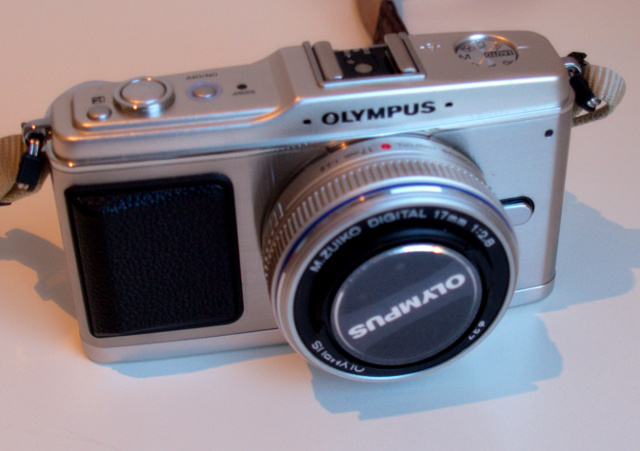
E-P1 with pancake lens, front view
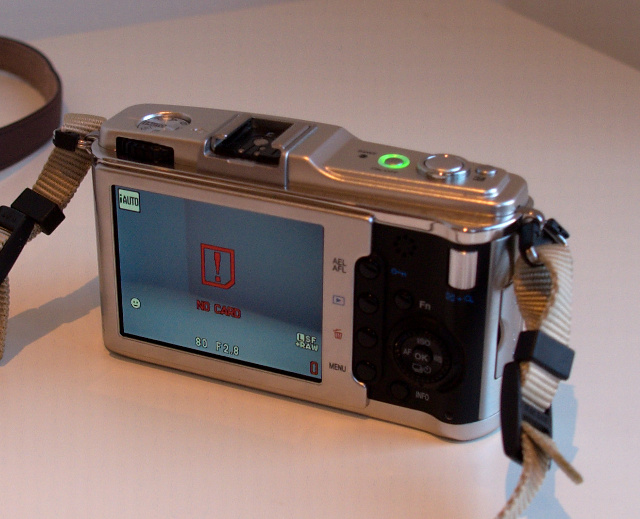
E-P1, rear view
One thing I like about the E-P1 is that there are two rotary controls: the
metal roller at the top right of the back and the dial on the mid-right. By
default in manual mode the roller controls aperture and the dial controls
shutter speed. When using my e420 I have to keep button pushing to change
between adjusting shutter speed and aperture but with the E-P1 I can just move
my thumb over the right control - this made taking photos in manual mode much
less fiddly.
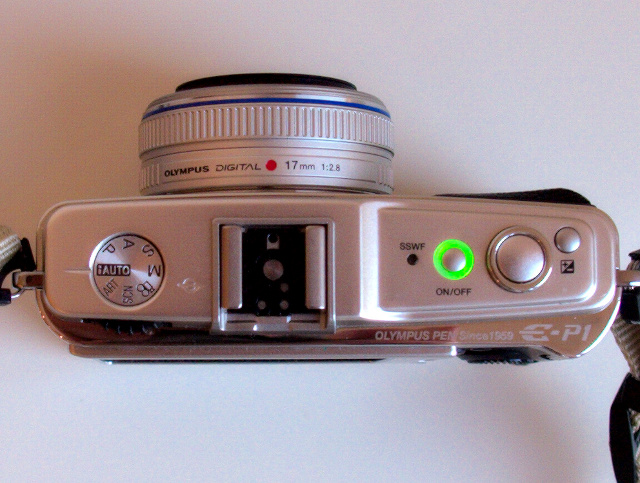
E-P1 with pancake lens, top view
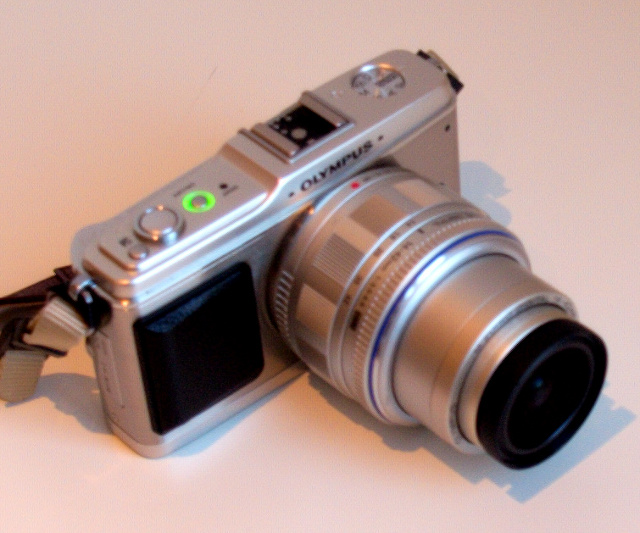
E-P1 with 14-42mm lens, extended
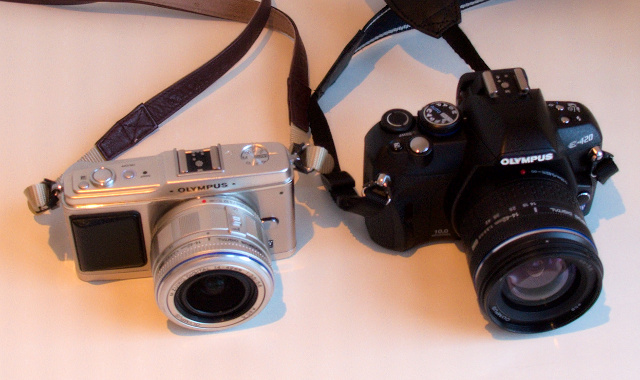
E-P1 and E-420
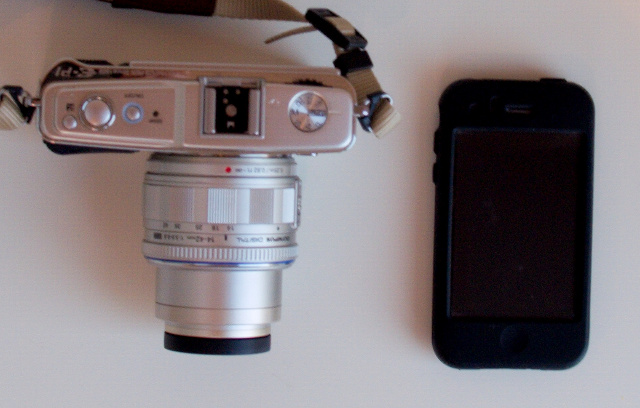
E-P1 and iPhone
OK, it looks nice but what are the photos like? Well, the first thing that
impressed me was the clarity of the images. For example, here’s a shot of a
piece of broken glass that I took from over a metre away on my way to work.
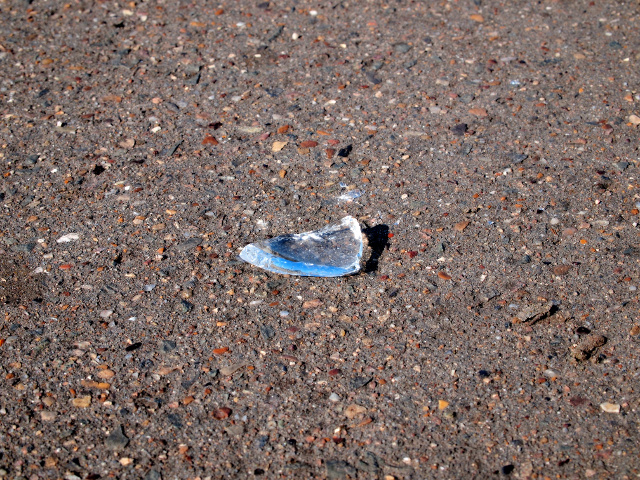
Broken glass on the pavement
OK, nothing very interesting there. Here’s the same shot but with a tighter
crop before I re-sized the image. Check out how sharp the detail is and the
reflections in the glass.
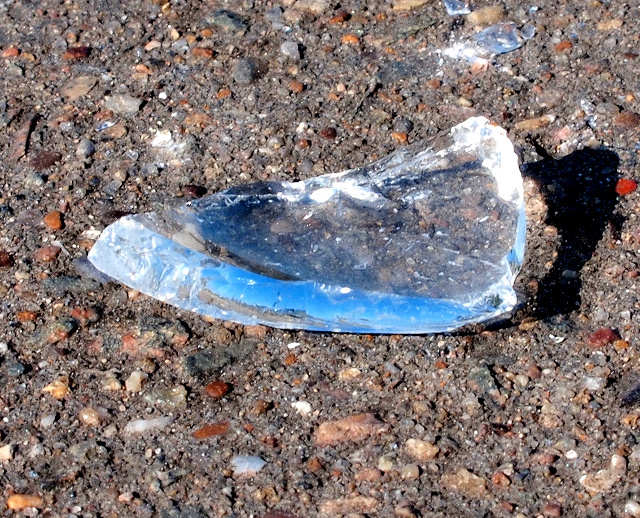
Broken glass on the pavement, crop #1
Here’s an even tighter crop, again there is plenty of detail and it’s very
sharp.
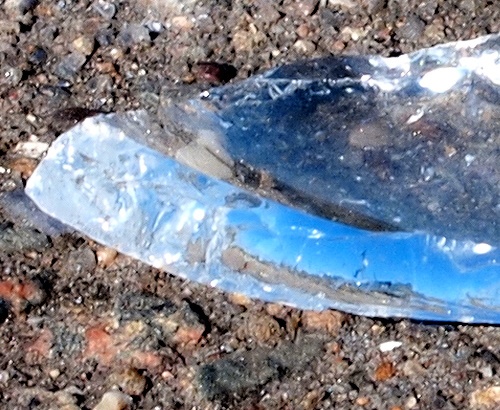
Broken glass on the pavement, crop #2
Once again these images are from the exact same source image and no processing
(besides cropping & re-sizing) was applied. The image was taken hand held in
good light using the standard 14-42mm kit lens.
Here’s a close up (again, hand-held with the standard lens)

Flower close up
and another.
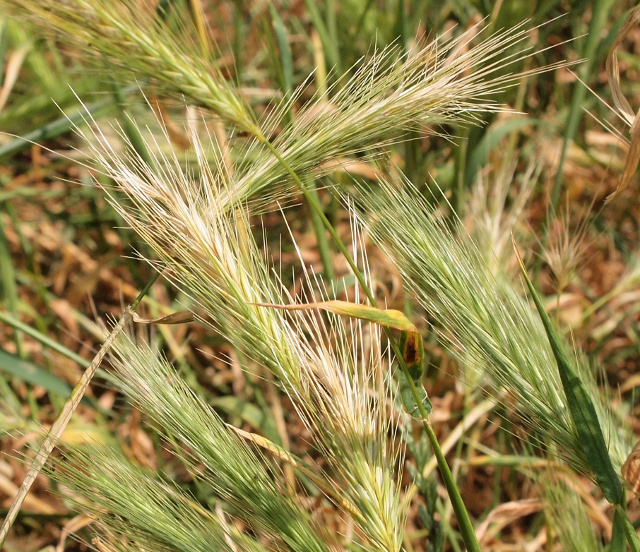
Grass
I was really impressed by the clarity of the images you get from the E-P1 even
when you use crops to “zoom in” on small parts of the image. The E-P1 has
built-in image stabilisation in the body and I suspect that this is one reason
for the (to me anyway) surprising clarity and sharpness of the images.
Here’s a few more shots taken while wandering around.
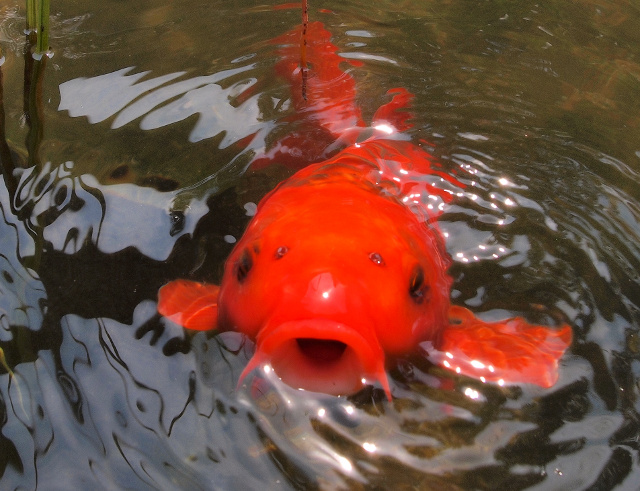
Wow! Is that the new Olympus?
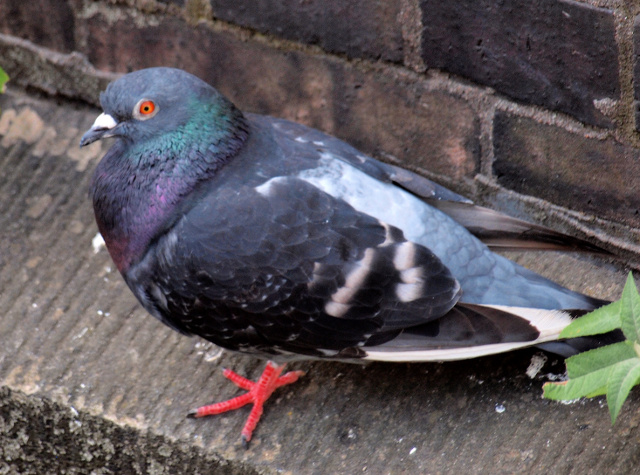
Pigeon
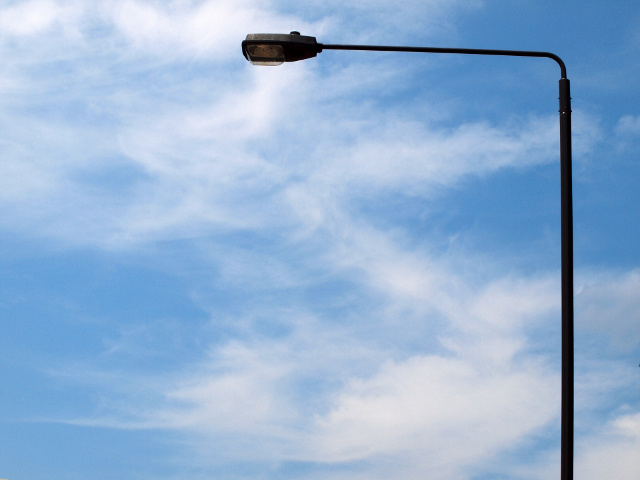
Streetlamp
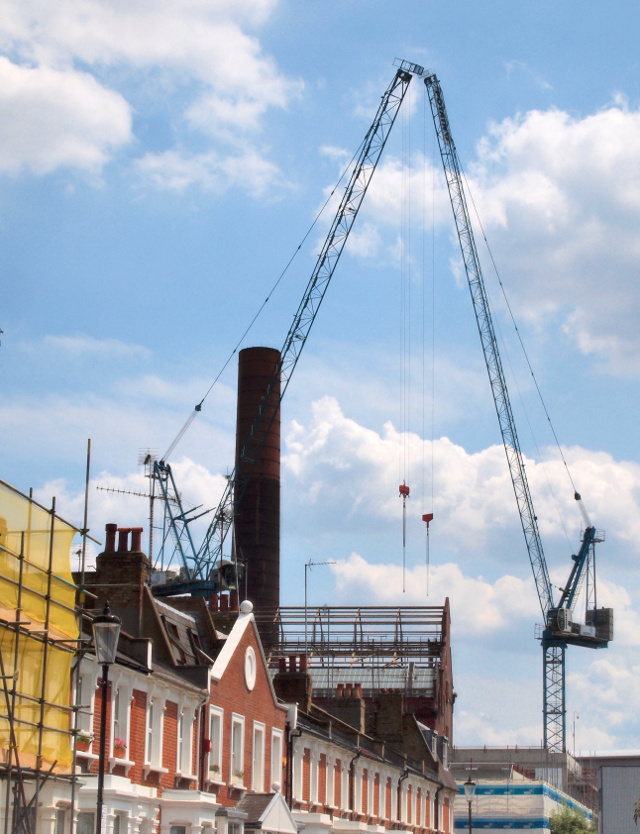
Building work

Rusting piping
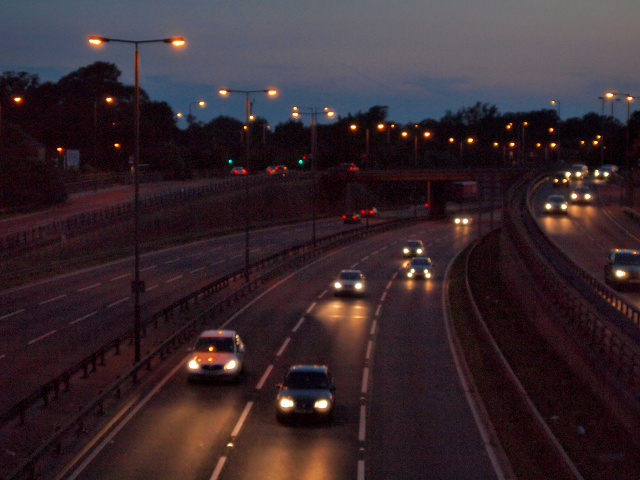
Night shot
I’m not going to claim that any of these are great photos but they give some
idea of results you can get without really trying.
One feature I really like is the built in level indicators showing the degree
of tilt (tipping front to back) and roll (rotation about the axis of the
lens). I’m terrible for taking photos with a few degrees of roll and and I
found the level indicator to be really useful.
The E-P1 does not come with a built-in flash although it does have a hot-shoe
for an external flash. It’s good then that the E-P1 appears to perform quite
well in low-light conditions without a flash. I had the feeling that the E-P1
was better at higher ISOs than my e420 so I decided to put them to the test.
In the following photos I have performed no processing on the images other
than cropping and resizing. I used the kit 14-42mm lens that came with each
camera and took the same subjects in the same lighting conditions (indoor,
artificial light) at as near the same time as I could. I shot the e420 images
in raw mode but since the E-P1 uses a newer raw format I used the E-P1 in JPEG
mode. Both cameras were set to auto white balance. The e420 is limited to ISO
100, 200, 400, 800 & 1600 so for this test I used 400, 800 & 1600. The E-P1
has much more flexibility with ISO settings: not only can it go as high as
6400 it is possible to increase the ISO in smaller increments.
ISO 400 - this is the highest ISO that I normally use with my e420 as I find
the noise becomes quite noticeable. To my eyes the E-P1 photo looks a lot
better.
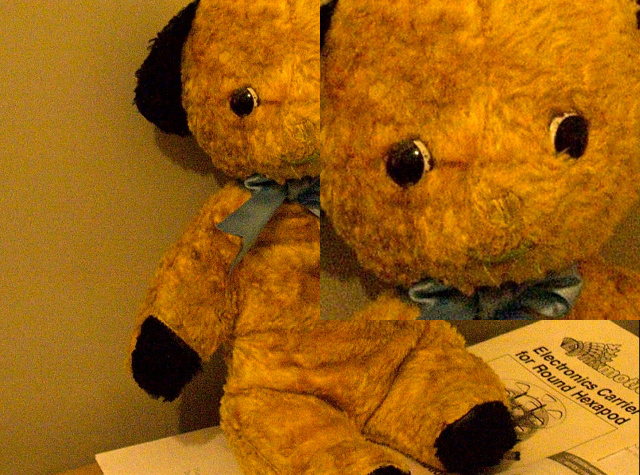
e420 ISO 400, F3.5, 40
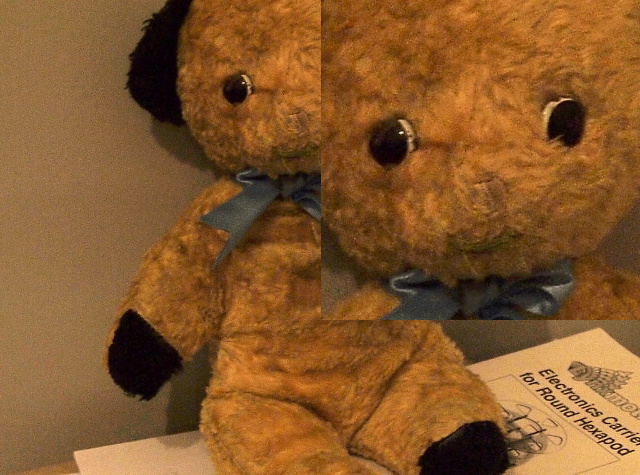
E-P1 ISO 400, F3.5, 40
ISO 800 - the e420 is getting noisier but the E-P1 is still looking pretty
good.
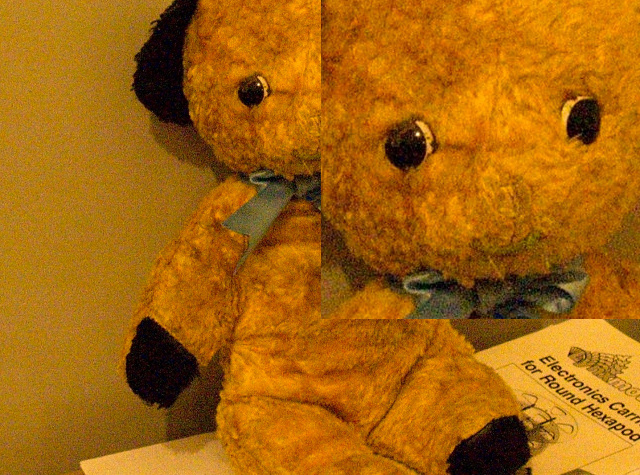
e420 ISO 800, F3.5, 50
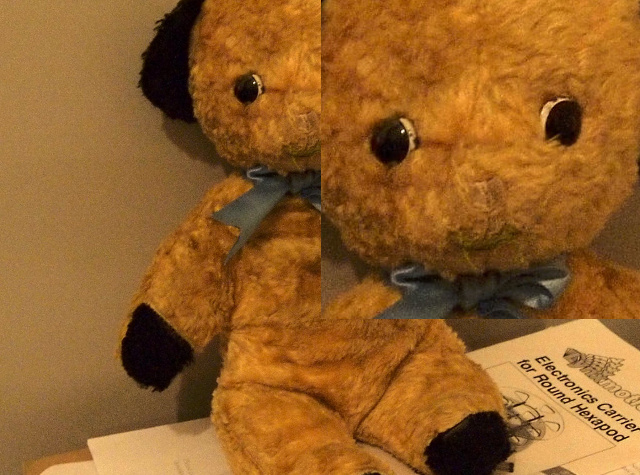
E-P1 ISO 800, F3.5, 50
ISO 1600 - the e420 image is unusable by this point but the E-P1 is not doing
too badly at all.
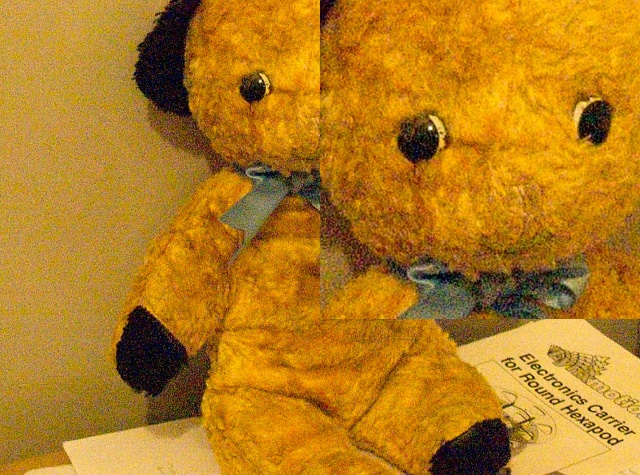
e420 ISO 1600, F3.5, 60
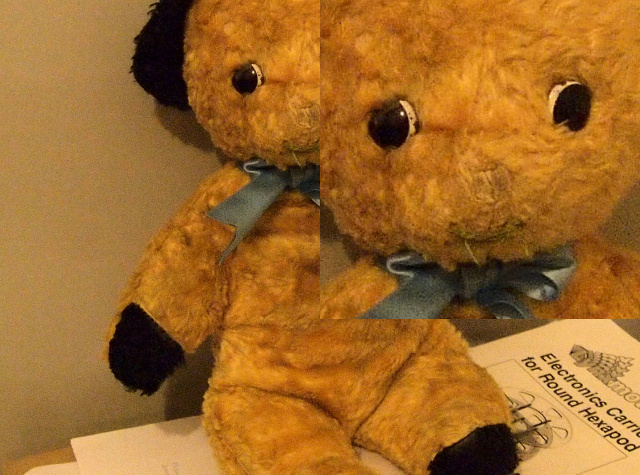
E-P1 ISO 1600, F3.5, 60
Since the E-P1 can go up to ISO 6400 I thought it would be rude not to give it
a go
IS0 3200
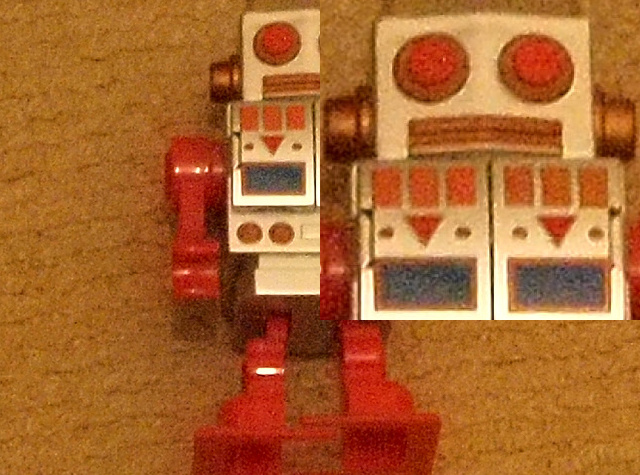
E-P1 ISO 3200, F3.5, 60
ISO 6400
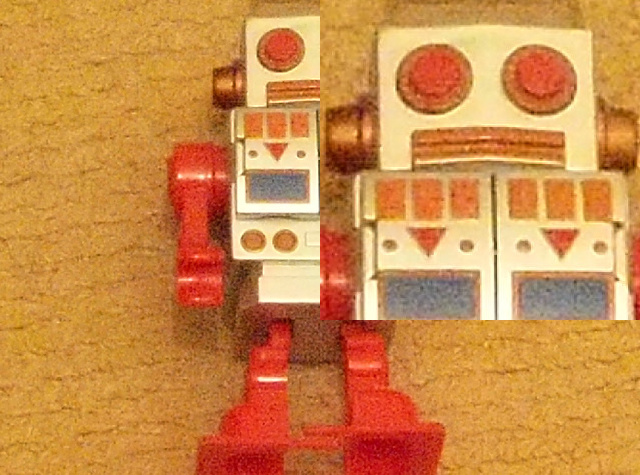
E-P1 ISO 6400, F3.5, 60
At ISO 3200 & 6400 the E-P1 is pretty noisy although I should point out that
the robot is quite a lot smaller than Sooty and so the noise is more
pronounced because you are seeing a smaller part of the original image.
There is a lot to like about this camera, in particular:
- the LCD display - large and clear
- classic styling
- low-light performance
- use of two dials to control shutter speed & aperture
- level indicators
- sharpness and detail captured
In fact when trying to think of something I didn’t like the only thing that
came to mind was the shutter lag. The E-P1 performs much better than a typical
compact but at times it felt sluggish compared to my e420. The auto focus
seemed to struggle to lock on at times; whereas with my e420 I’m used to
depressing the shutter release half-way to focus and the re-composing the
scene this did not seem to work nearly as well with the E-P1 and a lot of the
time the camera seemed to refocus while I was re-composing the photo.
Considering that E-P1 costs more than I paid for my e420 this was something of
a disappointment.
The E-P1 is also capable of taking videos but I did not test this out. It also
contains “art filters” that let you alter photos in the camera. This seems
rather pointless to me as once you’ve applied a filter you can’t undo it and
though it’s a bit of fun I suspect that most people willing to pay 700 for a
camera will have image editing software that is capable of far more on on
their computer.
In summary then, the E-P1 is a camera that has a lot to like about it and I
was quite reluctant to give it back.
Link